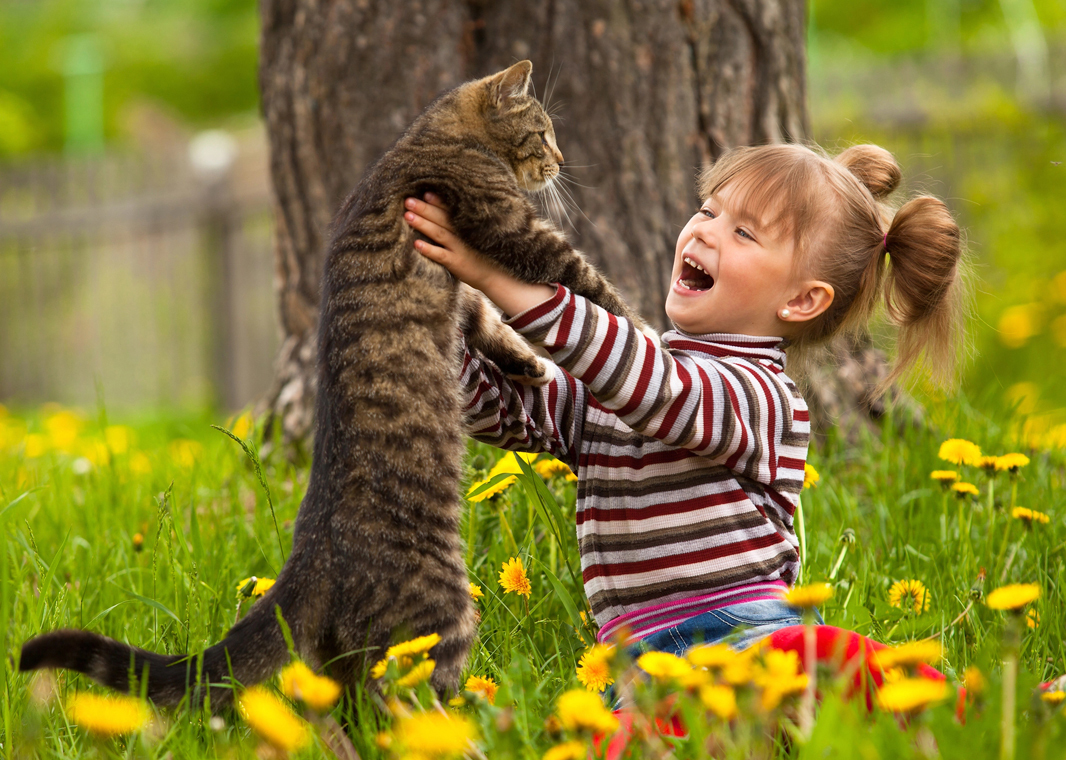Did you know that caring for a pet can be one of the most effective ways to teach your children empathy?
All studies have shown that children who care for animals, develop stronger empathy skills, as they learn to recognize and respect the needs of another creature.
Imagine a child learning to walk, with their dog running alongside them, encouraging them. Or a cat curled up next to a child reading, offering a silent sense of security.
All the above are not just cute images, they are scenes of their life that prove the profound impact animals have on children’s development.
Dogs and cats aren’t just pets. They are the first teachers of love, responsibility and empathy- lessons that build a strong foundation for their future.
Let’s find out the 10 +1 ways of how cats and dogs have a positive influence on children’s life.
The 10+1 most important benefits of children living with cats and dogs
1.Permanent Companionship
Childhood isn’t always easy, but a pet provides constant companionship for children through joys and sorrows. It is a source of comfort, helping children cope with even difficult life lessons. When children feel sad, angry or scared, they can always count on their dog or cat for consolation.
2.Stress reduction
Petting and cuddling a pet has been proven to reduce stress and help people relax. The simple act of physical contact with an animal can release endorphins, the “feel-good” hormones, in the brain, creating a sense of calm and happiness, something that children really need.
3.Active way of life
Taking care of an animal encourages a more active way of live. Children with dogs exercise more on a daily basis, as dogs need walks, running and playing.
4.Responsibility
Caring for a pet like a cat or dog teaches children responsibility. Providing food and water for their four-legged friend brings them closer to responsibility.
5.Empathy and Compassion
As mentioned above, children learn empathy and compassion through their interactions with pets.
Empathy, which is the ability to understand and share the feelings of others, is a fundamental social skill.
They learn to recognize when their pet is happy, sad, scared, or sick and to respond with care and understanding. This process strengthens their ability to connect with others, resolve conflicts, and build healthy relationships in their adult life.
6.Self-esteem
Children develop a higher level of self-esteem by taking on the responsibilities that come with owning a pet. Caring for an animal, no matter which species, gives children a sense of competence and success
When a child consistently remembers to feed their pet, clean its cage, or take it for a walk (always with adult supervision, where necessary), they feel they substantially contribute to the well-being of another creature.
This sense of purpose and contribution boosts their self-confidence and shows them that they are capable of meeting challenges.
7.Boost the immune system
Studies have shown that babies who grow up in close contact with a pet tend to get sick less often in the first year of their life, which results in fewer visits to the pediatrician. Specifically, exposure to certain bacteria and allergens carried by pets seems to help the strengthening of infants’ immune systems.
Moreover, it’s surprising the fact that some studies have shown that children who grow up with pets, especially dogs, may have a reduced risk of developing allergies later in life.
8.Unconditional Love and Devotion
Pets teach children the meaning of unconditional love and devotion. In contrast to human relationships, where expectations and judgments prevail, the love received by a pet is pure and genuine.
A pet loves a child despite the latter’s mistakes, appearance or achievements. This experience is valuable, as it builds the child’s self-esteem and emotional security.
9.Socialization
Children who walk their dogs attract other children in an easier way, improving their social skills and self-confidence. Walking the dog gives them the chance to interact with other people, like dog owners or simple passersby, who desire to pet the animal.
These interactions help children practice their communication skills, make new friends and feel more comfortable in social situations.
10. Encouragement of Speaking
Pets are the ideal “co-speakers” for children, as they encourage them to practice their language abilities.
Children usually feel more comfortable to speak to an animal that does not judge them. They can express their thoughts and their feelings, read them stories or simply talk without being interrupted.
This is particularly beneficial for children with speech difficulties or for those who are shy, as the pet creates a safe and supportive environment for them to practice communication.
11. Protection and Security
Dogs are known for their instinct to protect the family, offering children a sense of security.
While cats may not show protection in the same way, their calm presence and purring can create a reassuring environment.
Both species are sensitive to changes in children’s mood and often offer comfort to them when they need it.
Cats and dogs are priceless gifts in children’s life
Living with a dog or a cat is a precious gift for children. Besides love and companionship, it offers life lessons, enhances development and helps towards a happier and healthier life. Because, we must not forget that these creatures fill our every day life with moments of joy, laughter, and tenderness that remain engraved in children’s hearts forever.








